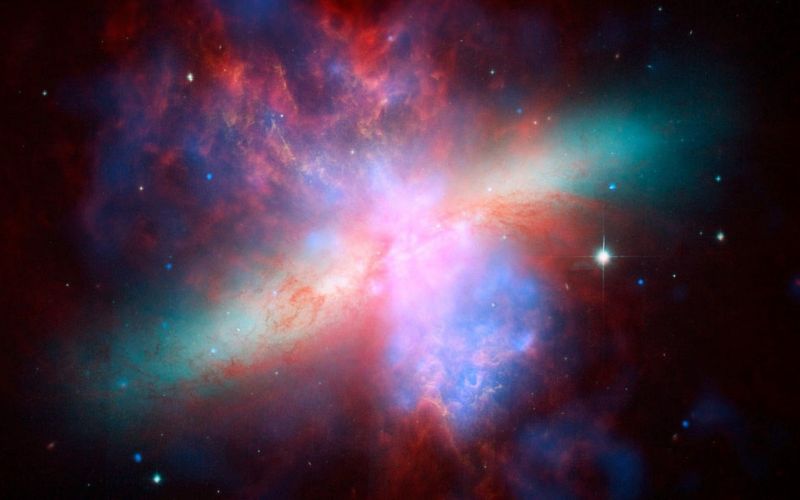[{"id":3975,"link":"https:\/\/dynaverse.astro.uni-koeln.de\/archives\/3975","name":"alma-arc","thumbnail":{"url":"https:\/\/dynaverse.astro.uni-koeln.de\/wp-content\/uploads\/2024\/11\/Germany_ARC_RGB_y.png","alt":"ALMA-ARC"},"title":"ALMA-ARC","author":{"name":"admin","link":"#"},"date":"Nov 4, 2024","dateGMT":"2024-11-04 15:31:49","modifiedDate":"2025-05-23 22:48:24","modifiedDateGMT":"2025-05-23 20:48:24","commentCount":"0","commentStatus":"open","categories":{"coma":"<a href=\"https:\/\/dynaverse.astro.uni-koeln.de\/dynaverse\/projects\" rel=\"category tag\">Projects<\/a>","space":"<a href=\"https:\/\/dynaverse.astro.uni-koeln.de\/dynaverse\/projects\" rel=\"category tag\">Projects<\/a>"},"taxonomies":{"post_tag":""},"readTime":{"min":0,"sec":28},"status":"publish","excerpt":""},{"id":2264,"link":"https:\/\/dynaverse.astro.uni-koeln.de\/archives\/2264","name":"dfb-research-unit-for-5409-sunbic-structure-preserving-numerical-methods-for-bulk-and-interface-coupling-of-heterogeneous-models","thumbnail":{"url":"https:\/\/dynaverse.astro.uni-koeln.de\/wp-content\/uploads\/2023\/09\/DFG.png","alt":""},"title":"DFB Research Unit FOR 5409 - SNUBIC: Structure-preserving numerical methods for bulk- and interface-coupling of heterogeneous models","author":{"name":"Steffi","link":"#"},"date":"Sep 20, 2023","dateGMT":"2023-09-20 09:20:23","modifiedDate":"2025-07-08 18:54:43","modifiedDateGMT":"2025-07-08 16:54:43","commentCount":"0","commentStatus":"open","categories":{"coma":"<a href=\"https:\/\/dynaverse.astro.uni-koeln.de\/dynaverse\/projects\" rel=\"category tag\">Projects<\/a>","space":"<a href=\"https:\/\/dynaverse.astro.uni-koeln.de\/dynaverse\/projects\" rel=\"category tag\">Projects<\/a>"},"taxonomies":{"post_tag":""},"readTime":{"min":1,"sec":3},"status":"publish","excerpt":""},{"id":2261,"link":"https:\/\/dynaverse.astro.uni-koeln.de\/archives\/2261","name":"horizon-eurohpc-centres-of-excellence-for-hpc-applications","thumbnail":{"url":"https:\/\/dynaverse.astro.uni-koeln.de\/wp-content\/uploads\/2023\/09\/space-logo-menu.png","alt":""},"title":"Horizon-EuroHPC Centres of Excellence for HPC Applications","author":{"name":"Steffi","link":"#"},"date":"Sep 20, 2023","dateGMT":"2023-09-20 09:14:54","modifiedDate":"2025-05-23 22:51:59","modifiedDateGMT":"2025-05-23 20:51:59","commentCount":"0","commentStatus":"open","categories":{"coma":"<a href=\"https:\/\/dynaverse.astro.uni-koeln.de\/dynaverse\/projects\" rel=\"category tag\">Projects<\/a>","space":"<a href=\"https:\/\/dynaverse.astro.uni-koeln.de\/dynaverse\/projects\" rel=\"category tag\">Projects<\/a>"},"taxonomies":{"post_tag":""},"readTime":{"min":1,"sec":9},"status":"publish","excerpt":""},{"id":2258,"link":"https:\/\/dynaverse.astro.uni-koeln.de\/archives\/2258","name":"eu-h2020-european-center-of-excellence-in-exascale-computing","thumbnail":{"url":"https:\/\/dynaverse.astro.uni-koeln.de\/wp-content\/uploads\/2023\/09\/2021-01-Logo-RGB-RAISE_standard.png.webp","alt":""},"title":"EU H2020: European Center of Excellence in Exascale Computing","author":{"name":"Steffi","link":"#"},"date":"Sep 20, 2023","dateGMT":"2023-09-20 09:11:24","modifiedDate":"2025-05-23 22:51:09","modifiedDateGMT":"2025-05-23 20:51:09","commentCount":"0","commentStatus":"open","categories":{"coma":"<a href=\"https:\/\/dynaverse.astro.uni-koeln.de\/dynaverse\/projects\" rel=\"category tag\">Projects<\/a>","space":"<a href=\"https:\/\/dynaverse.astro.uni-koeln.de\/dynaverse\/projects\" rel=\"category tag\">Projects<\/a>"},"taxonomies":{"post_tag":""},"readTime":{"min":1,"sec":4},"status":"publish","excerpt":""},{"id":2254,"link":"https:\/\/dynaverse.astro.uni-koeln.de\/archives\/2254","name":"microwave-infrared-double-resonance-spectrometer","thumbnail":{"url":"https:\/\/dynaverse.astro.uni-koeln.de\/wp-content\/uploads\/2023\/09\/DFG.png","alt":""},"title":"DFG HBFG Large-scale instrumentation: Microwave - Infrared Double Resonance Spectrometer","author":{"name":"Steffi","link":"#"},"date":"Sep 20, 2023","dateGMT":"2023-09-20 08:58:36","modifiedDate":"2025-07-08 19:03:04","modifiedDateGMT":"2025-07-08 17:03:04","commentCount":"0","commentStatus":"open","categories":{"coma":"<a href=\"https:\/\/dynaverse.astro.uni-koeln.de\/dynaverse\/projects\" rel=\"category tag\">Projects<\/a>","space":"<a href=\"https:\/\/dynaverse.astro.uni-koeln.de\/dynaverse\/projects\" rel=\"category tag\">Projects<\/a>"},"taxonomies":{"post_tag":""},"readTime":{"min":1,"sec":57},"status":"publish","excerpt":""},{"id":2255,"link":"https:\/\/dynaverse.astro.uni-koeln.de\/archives\/2255","name":"optical-parametric-oscillator-opo","thumbnail":{"url":"https:\/\/dynaverse.astro.uni-koeln.de\/wp-content\/uploads\/2023\/09\/DFG.png","alt":""},"title":"DFG HBFG Large-scale instrumentation: Optical Parametric Oscillator (OPO)","author":{"name":"Steffi","link":"#"},"date":"Sep 20, 2023","dateGMT":"2023-09-20 08:58:30","modifiedDate":"2025-07-08 19:05:41","modifiedDateGMT":"2025-07-08 17:05:41","commentCount":"0","commentStatus":"closed","categories":{"coma":"<a href=\"https:\/\/dynaverse.astro.uni-koeln.de\/dynaverse\/projects\" rel=\"category tag\">Projects<\/a>","space":"<a href=\"https:\/\/dynaverse.astro.uni-koeln.de\/dynaverse\/projects\" rel=\"category tag\">Projects<\/a>"},"taxonomies":{"post_tag":""},"readTime":{"min":1,"sec":32},"status":"publish","excerpt":""},{"id":2202,"link":"https:\/\/dynaverse.astro.uni-koeln.de\/archives\/2202","name":"erc-synergy-grant","thumbnail":{"url":"https:\/\/dynaverse.astro.uni-koeln.de\/wp-content\/uploads\/2024\/08\/erc-logo_new.png","alt":""},"title":"ERC Synergy Grant - Sub-percent calibration of the extragalactic distance scale in the era of big surveys","author":{"name":"Steffi","link":"#"},"date":"Sep 20, 2023","dateGMT":"2023-09-20 08:36:22","modifiedDate":"2025-07-08 19:17:38","modifiedDateGMT":"2025-07-08 17:17:38","commentCount":"0","commentStatus":"closed","categories":{"coma":"<a href=\"https:\/\/dynaverse.astro.uni-koeln.de\/dynaverse\/projects\" rel=\"category tag\">Projects<\/a>","space":"<a href=\"https:\/\/dynaverse.astro.uni-koeln.de\/dynaverse\/projects\" rel=\"category tag\">Projects<\/a>"},"taxonomies":{"post_tag":""},"readTime":{"min":0,"sec":39},"status":"publish","excerpt":""},{"id":2199,"link":"https:\/\/dynaverse.astro.uni-koeln.de\/archives\/2199","name":"erc-starting-grant-the-radiative-interstellar-medium","thumbnail":{"url":"https:\/\/dynaverse.astro.uni-koeln.de\/wp-content\/uploads\/2023\/09\/csm_march_2019_7776f2794c.png","alt":""},"title":"ERC Starting Grant - The radiative interstellar medium","author":{"name":"Steffi","link":"#"},"date":"Sep 19, 2023","dateGMT":"2023-09-19 15:31:55","modifiedDate":"2025-05-23 22:54:31","modifiedDateGMT":"2025-05-23 20:54:31","commentCount":"0","commentStatus":"open","categories":{"coma":"<a href=\"https:\/\/dynaverse.astro.uni-koeln.de\/dynaverse\/projects\" rel=\"category tag\">Projects<\/a>","space":"<a href=\"https:\/\/dynaverse.astro.uni-koeln.de\/dynaverse\/projects\" rel=\"category tag\">Projects<\/a>"},"taxonomies":{"post_tag":""},"readTime":{"min":1,"sec":37},"status":"publish","excerpt":""},{"id":2195,"link":"https:\/\/dynaverse.astro.uni-koeln.de\/archives\/2195","name":"erc-starting-grant-an-exascale-aware-and-un-crashable-space-time-adaptive-discontinuous-spectral-element-solver-for-non-linear-conservation-laws","thumbnail":{"url":"https:\/\/dynaverse.astro.uni-koeln.de\/wp-content\/uploads\/2023\/09\/iosimulation-kt.png","alt":""},"title":"ERC Starting Grant - An Exascale aware and Un-crashable Space-Time-Adaptive Discontinuous Spectral Element Solver for Non-Linear Conservation Laws","author":{"name":"Steffi","link":"#"},"date":"Sep 19, 2023","dateGMT":"2023-09-19 15:27:34","modifiedDate":"2025-05-23 22:53:53","modifiedDateGMT":"2025-05-23 20:53:53","commentCount":"0","commentStatus":"closed","categories":{"coma":"<a href=\"https:\/\/dynaverse.astro.uni-koeln.de\/dynaverse\/projects\" rel=\"category tag\">Projects<\/a>","space":"<a href=\"https:\/\/dynaverse.astro.uni-koeln.de\/dynaverse\/projects\" rel=\"category tag\">Projects<\/a>"},"taxonomies":{"post_tag":""},"readTime":{"min":1,"sec":34},"status":"publish","excerpt":""},{"id":2193,"link":"https:\/\/dynaverse.astro.uni-koeln.de\/archives\/2193","name":"erc-consolidator-grant-empire-galaxy-evolution-in-the-alma-era-the-baryon-cycle-and-star-formation-in-nearby-galaxies","thumbnail":{"url":"https:\/\/dynaverse.astro.uni-koeln.de\/wp-content\/uploads\/2023\/09\/ngc4321.jpg","alt":""},"title":"ERC Consolidator Grant - EMPIRE: Galaxy Evolution in the ALMA Era \u2013 The Baryon Cycle and Star Formation in Nearby Galaxies","author":{"name":"Steffi","link":"#"},"date":"Sep 19, 2023","dateGMT":"2023-09-19 15:17:33","modifiedDate":"2025-05-23 22:55:00","modifiedDateGMT":"2025-05-23 20:55:00","commentCount":"0","commentStatus":"closed","categories":{"coma":"<a href=\"https:\/\/dynaverse.astro.uni-koeln.de\/dynaverse\/projects\" rel=\"category tag\">Projects<\/a>","space":"<a href=\"https:\/\/dynaverse.astro.uni-koeln.de\/dynaverse\/projects\" rel=\"category tag\">Projects<\/a>"},"taxonomies":{"post_tag":""},"readTime":{"min":1,"sec":20},"status":"publish","excerpt":""},{"id":2191,"link":"https:\/\/dynaverse.astro.uni-koeln.de\/archives\/2191","name":"erc-advanced-grand-missions","thumbnail":{"url":"https:\/\/dynaverse.astro.uni-koeln.de\/wp-content\/uploads\/2024\/08\/erc-logo_new.png","alt":""},"title":"ERC Advanced Grand: Molecular Spectra of Missing Ions in the Laboratory and in Space","author":{"name":"Steffi","link":"#"},"date":"Sep 19, 2023","dateGMT":"2023-09-19 15:05:02","modifiedDate":"2025-05-23 22:56:11","modifiedDateGMT":"2025-05-23 20:56:11","commentCount":"0","commentStatus":"open","categories":{"coma":"<a href=\"https:\/\/dynaverse.astro.uni-koeln.de\/dynaverse\/projects\" rel=\"category tag\">Projects<\/a>","space":"<a href=\"https:\/\/dynaverse.astro.uni-koeln.de\/dynaverse\/projects\" rel=\"category tag\">Projects<\/a>"},"taxonomies":{"post_tag":""},"readTime":{"min":1,"sec":51},"status":"publish","excerpt":""},{"id":2165,"link":"https:\/\/dynaverse.astro.uni-koeln.de\/archives\/2165","name":"punch4nfdi","thumbnail":{"url":"https:\/\/dynaverse.astro.uni-koeln.de\/wp-content\/uploads\/2023\/09\/punch-schmal-1.gif","alt":""},"title":"PUNCH4NFDI","author":{"name":"Steffi","link":"#"},"date":"Sep 19, 2023","dateGMT":"2023-09-19 08:58:50","modifiedDate":"2024-08-23 21:04:52","modifiedDateGMT":"2024-08-23 19:04:52","commentCount":"0","commentStatus":"open","categories":{"coma":"<a href=\"https:\/\/dynaverse.astro.uni-koeln.de\/dynaverse\/projects\" rel=\"category tag\">Projects<\/a>","space":"<a href=\"https:\/\/dynaverse.astro.uni-koeln.de\/dynaverse\/projects\" rel=\"category tag\">Projects<\/a>"},"taxonomies":{"post_tag":""},"readTime":{"min":0,"sec":50},"status":"publish","excerpt":""},{"id":2163,"link":"https:\/\/dynaverse.astro.uni-koeln.de\/archives\/2163","name":"b3d-nrw-cluster-for-dataintensive-radioastronomy","thumbnail":{"url":"https:\/\/dynaverse.astro.uni-koeln.de\/wp-content\/uploads\/2023\/09\/b3d.jpg","alt":""},"title":"B3D: NRW-Cluster for dataintensive radioastronomy","author":{"name":"Steffi","link":"#"},"date":"Sep 19, 2023","dateGMT":"2023-09-19 08:51:53","modifiedDate":"2024-12-09 19:15:12","modifiedDateGMT":"2024-12-09 18:15:12","commentCount":"0","commentStatus":"closed","categories":{"coma":"<a href=\"https:\/\/dynaverse.astro.uni-koeln.de\/dynaverse\/projects\" rel=\"category tag\">Projects<\/a>","space":"<a href=\"https:\/\/dynaverse.astro.uni-koeln.de\/dynaverse\/projects\" rel=\"category tag\">Projects<\/a>"},"taxonomies":{"post_tag":""},"readTime":{"min":0,"sec":35},"status":"publish","excerpt":""},{"id":2161,"link":"https:\/\/dynaverse.astro.uni-koeln.de\/archives\/2161","name":"sfb956","thumbnail":{"url":"https:\/\/dynaverse.astro.uni-koeln.de\/wp-content\/uploads\/2023\/09\/SFB956_Logo_4C_Englisch-1_0.jpeg","alt":""},"title":"SFB 956","author":{"name":"Steffi","link":"#"},"date":"Sep 19, 2023","dateGMT":"2023-09-19 08:51:06","modifiedDate":"2024-08-23 21:04:53","modifiedDateGMT":"2024-08-23 19:04:53","commentCount":"0","commentStatus":"open","categories":{"coma":"<a href=\"https:\/\/dynaverse.astro.uni-koeln.de\/dynaverse\/projects\" rel=\"category tag\">Projects<\/a>","space":"<a href=\"https:\/\/dynaverse.astro.uni-koeln.de\/dynaverse\/projects\" rel=\"category tag\">Projects<\/a>"},"taxonomies":{"post_tag":""},"readTime":{"min":1,"sec":34},"status":"publish","excerpt":""},{"id":123,"link":"https:\/\/dynaverse.astro.uni-koeln.de\/archives\/123","name":"crc1601","thumbnail":{"url":"https:\/\/dynaverse.astro.uni-koeln.de\/wp-content\/uploads\/2023\/06\/SFB1601_logo_blue_grey-1.png","alt":""},"title":"SFB 1601","author":{"name":"admin","link":"#"},"date":"Jun 6, 2023","dateGMT":"2023-06-06 12:36:41","modifiedDate":"2025-09-04 11:19:56","modifiedDateGMT":"2025-09-04 09:19:56","commentCount":"0","commentStatus":"closed","categories":{"coma":"<a href=\"https:\/\/dynaverse.astro.uni-koeln.de\/dynaverse\/projects\" rel=\"category tag\">Projects<\/a>","space":"<a href=\"https:\/\/dynaverse.astro.uni-koeln.de\/dynaverse\/projects\" rel=\"category tag\">Projects<\/a>"},"taxonomies":{"post_tag":""},"readTime":{"min":1,"sec":57},"status":"publish","excerpt":""}]

